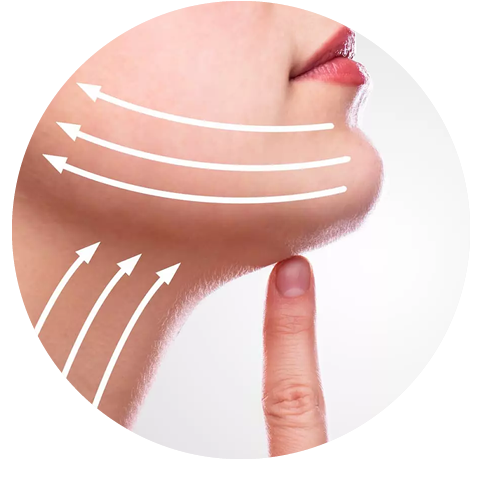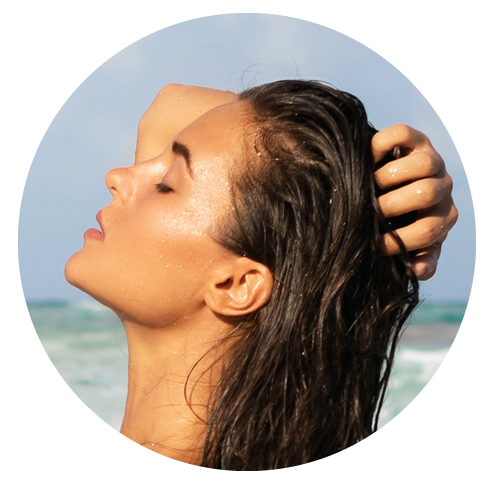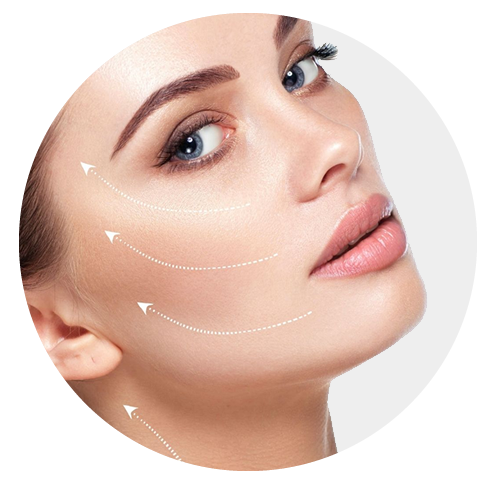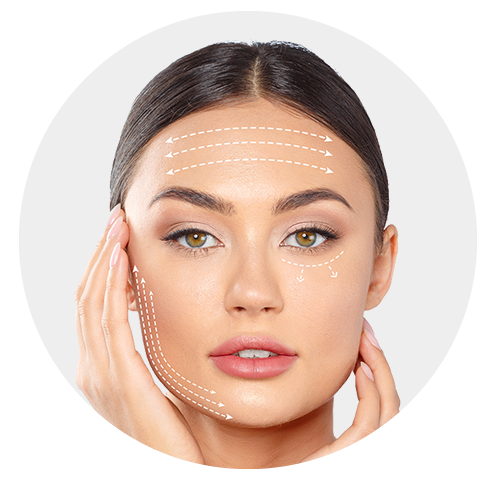The rhytidoplasty procedure takes a few hours, especially if it is performed in conjunction with another facial rejuvenation procedure. Incisions are usually made above the hairline at the temple level, extending to the front of the ears, continuing behind the ear lobe to the lower scalp. If the neck needs to be treated, a small incision under the chin is made.
Generally, the plastic surgeon separates the facial skin from the fat and muscle plane. The fat deposits of the neck and chin can be suctioned to improve the facial contour. Subsequently, the muscle is tightened and the excess skin is resected and sutured. In many cases, a drain is placed at the back of the ears to eliminate any blood loss.



